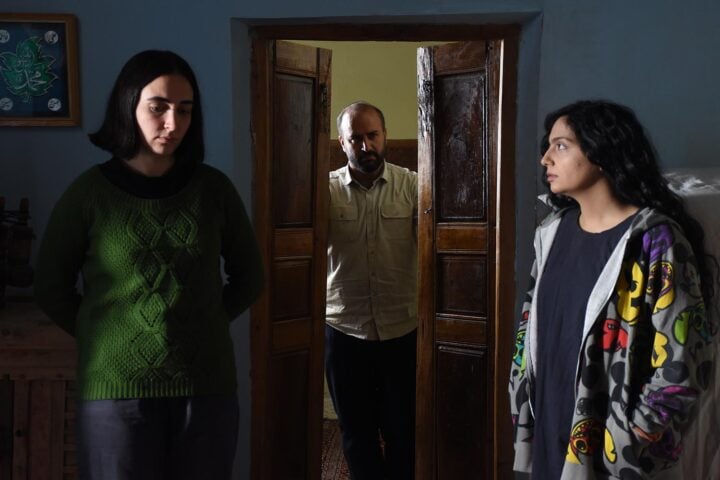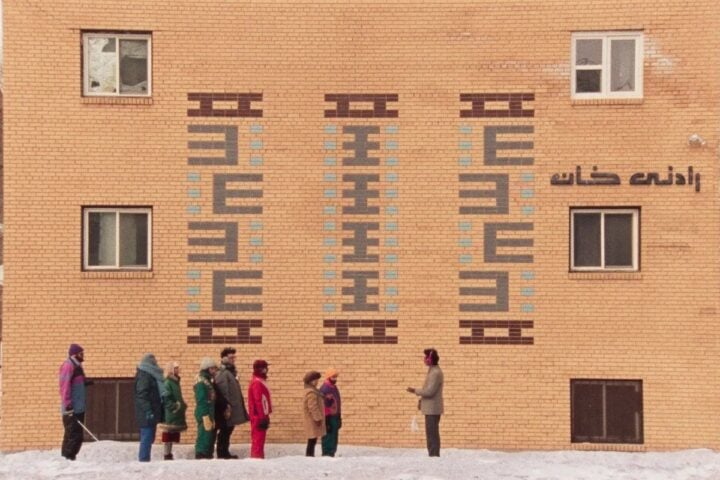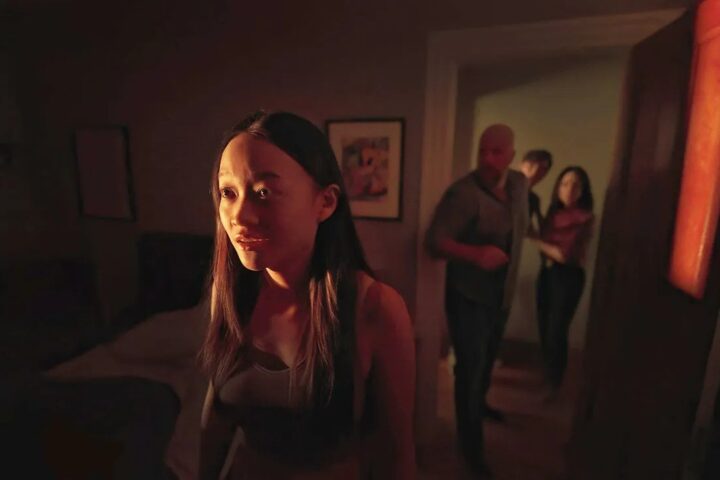Writer-director Mohammad Rasoulof’s The Seed of the Sacred Fig, the dissident Iranian filmmaker’s follow-up to 2020’s Golden Bear-winning There Is No Evil, is another clear-eyed account of the sacrifices and moral compromises forced on ordinary people by his homeland’s oppressive regime. The state’s affinity for capital punishment is again a target of Rasolouf’s ire, but he also has in his sights bourgeois complacency, the tyranny of traditional values, and, above all, the cruel machinations of Iran’s patriarchal culture.
As the film opens, state investigator Iman (Missagh Zareh) and his wife, Najmeh (Soheila Golestani), are tentatively celebrating his recent promotion, but their satisfaction with his hard-earned career advancement proves to be short-lived, as the government’s enforcement of strict hijab laws leads to widespread protests and their subsequent brutal suppression. Iman is forced to approve an ever-mounting number of death penalty orders for arrested youths, while Najmeh attempts to keep the peace with their teen daughters, Rezvan (Mahsa Rostami) and Sana (Setareh Maleki), who are increasingly radicalized by social media footage of the civil unrest unfolding on their doorstep, just outside their comfy middle-class bubble.
More often than not, Rasolouf addresses his themes head-on through direct conversations between family members in their home. The Seed of the Sacred Fig’s broader political context is never allowed to stray far from view. Real-life smartphone videos of riots on the streets of Tehran are also used to drive home the stakes of what’s being discussed, a choice that, though often impactful, can enhance the feeling that the film’s own story is a secondary priority.
As much as this 165-minute epic’s sermonizing approach might want for more subtlety, sometimes recalling a PSA, it’s refreshingly balanced and open in its inclusion of differing perspectives. The script tempers Rezvan’s righteous fury against injustice with some hints of her youthful naïveté and privilege, while Iman remains partly sympathetic, motivated as much by all-consuming fear and shame as he is by male entitlement and blinkered conservative values.
The toil that Iman’s job takes on his body is often foregrounded throughout, showing him to be a victim as well as perpetrator of the regime’s injustice. But this middle-aged man’s fatigue also contrasts heavily with the catastrophic disfigurement suffered by Rezvan and Sana’s young friend Sadaf (Niousha Akhshi) at the hands of heavily armed, over-zealous police.
Iman retains enough of his humanity to be affected by his brutal duties, losing sleep and becoming increasingly frazzled and paranoid, but his commitment to the unforgiving edicts of the state never truly wavers. And after a colleague gives him a gun for protection against the emboldened anti-government actors who now see state authorities as acceptable targets, events are set into motion that escalate to a drastic tonal and structural shift in the film’s second half.
Bringing implicit violence and the family’s simmering psychological warfare to the surface, the gradual mental deterioration of its put-upon patriarch sees The Seed of the Sacred Fig’s final hour not only enter conventional action-thriller terrain but careen right through it. And it ends up somewhere not too far away from The Shining’s Overlook Hotel, in spirit at least.
The film’s sudden switch of gears is bold enough to compensate for the slight implausibility of Iman’s actions and of his daughters’ heretofore hidden talents, but it also can’t help muddling Rasolouf’s messaging in the process. As the The Seed of the Sacred Fig progresses, the members of the central family unit are required to function in part as separate, three-dimensional figures with their own collective and inter-personal conflicts, while also standing in for contemporary Iranian social forces and serving as an allegory of the entire history of its draconian treatment of women. It can feel like Rasolouf is trying to do a little too much, flinging different theses against the brick wall of theocracy with a kind of frantic desperation.
Staging a final confrontation far outside the city in the crumbling ruins of Iran’s ancient empire, the director conjures a visual metaphor that’s potent in its simplicity, albeit a little tacked-on as the culmination of a story that’s mostly unfolded in a more literal, direct register. However, much like the entire second half of The Seed of the Sacred Fig, it could also be read as a whole-hearted repudiation of any prior efforts by certain characters to rationalize or justify the regime’s actions, with political context and character nuance judged as necessary casualties. And Rasolouf’s forging and eventual wielding of his blunt instrument is often surprisingly invigorating to behold, though it ultimately makes for a less satisfying work of art.
Since 2001, we've brought you uncompromising, candid takes on the world of film, music, television, video games, theater, and more. Independently owned and operated publications like Slant have been hit hard in recent years, but we’re committed to keeping our content free and accessible—meaning no paywalls or fees.
If you like what we do, please consider subscribing to our Patreon or making a donation.




